Ilahinamah الهی نامه (The Book of the Divine) 1896-97
113 folios. Embossed calligraphy on thick cream-coloured paper, probably executed with a styllus, in fine large nastaliq. Inscribed on one side only, on facing versos and rectos. Illuminated headings and margins, fols1v-2r | 22.8 x 14.4 cm (book measurement (conservation)) | RCIN 1005011


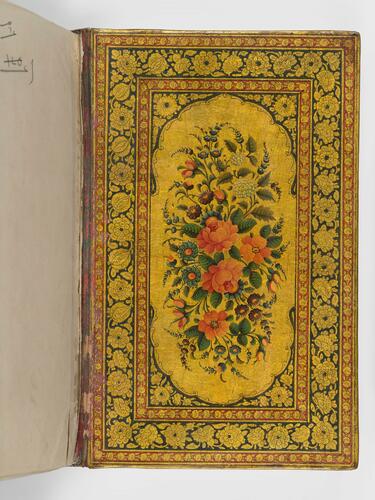

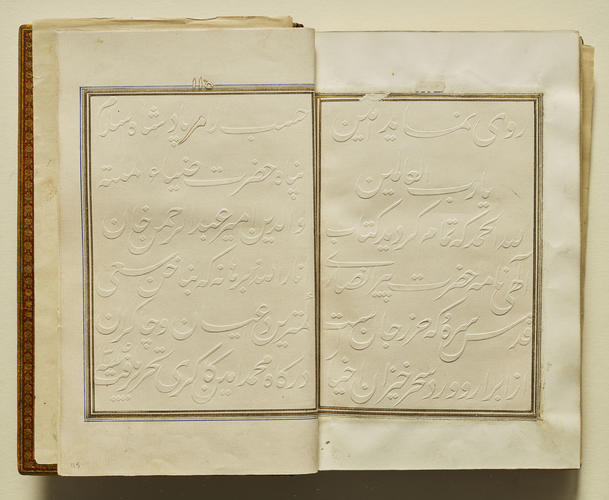
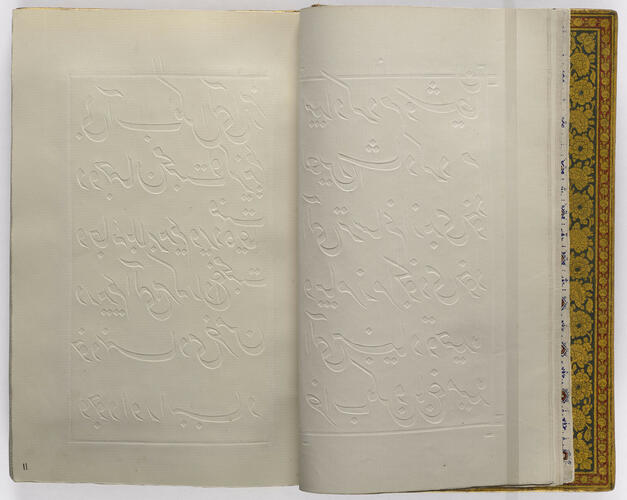


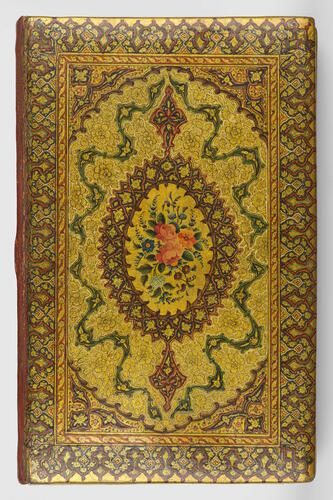
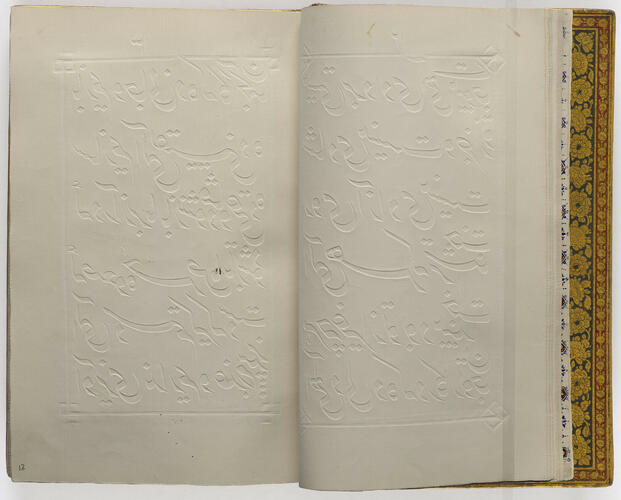











-
A book of Islamic prayers written in embossed script given to King George V by King Amanullah of Afghanistan in 1928.
The author, Khwajah Abd Allah Ansari of Herat (1006 - 1088), also known as Pir-i Herat (the Sage of Herat), was an 11th century Sufi scholar. His Ilahinamah, also known as the Munajatnamah (The Book of Supplications) is considered one of the Classical Sufi texts and comprises a collection of invocations, reflections and advice in Persian. It is believed to date to near the end of Ansari’s life along with several other books on Sufism and philosophy in Persian and Arabic.
This volume is dated 1314 AH (1896-7) and signed by the otherwise unknown calligrapher Muhammad Amin Kakari. He wrote the text in large-scale nastaliq script on thick cream coloured paper, embossed from the reverse so that each folio only has text on one side. The technique is known as khatt-i nakhuni or ‘fingernail calligraphy’, suggesting that calligraphers carved the words using their fingernails, although this book is more likely to have been tooled with a stylus. This style of embossed writing was popular in 19th century Persia and Afghanistan, likely linked to the rise of lithography and the printing press.
The manuscript’s colophon and an inscription on the first page indicate that the book was made for Amir Abd al-Rahman Khan, King of Afghanistan (see RCIN 1026538). The book opens with illuminated pages decorated in freehand designs in blue, red, green and gold metallic paints with decorative incising. Royal Afghan letters dating to the late 19th century in the Royal Archives (RA N42/173 and 174) are decorated in a similar style. The lacquered painted binding and doublures feature a floral spray at the centre, an outer border, and polychrome and gilt decoration with a red morocco spine.
King Amanullah of Afghanistan (r. 1919–29) presented the manuscript to King George V with two other volumes during his and Queen Soraya’s visit to Britain in March-April 1928 (see RCINS 2915384 and 2511689). The two other manuscripts were RCINs 1005005 and 1005031. At Winsor Castle on 2 April 1928, the King and Queen of Afghanistan also gave King George V and Queen Mary a series of fine lapis lazuli étuis, boxes and a writing set (RCINs 4349-50, 7244, 22997 and 23008), and King George V presented a thoroughbred stallion to King Amanullah in return.
Text adapted from Islamic Manuscripts in the Royal Collection: A Concise Catalogue (Leiden: 1992).Provenance
Presented to King George V by King Amanullah of Afghanistan in 1928.
-
Creator(s)
(calligrapher)Acquirer(s)
-
Medium and techniques
113 folios. Embossed calligraphy on thick cream-coloured paper, probably executed with a styllus, in fine large nastaliq. Inscribed on one side only, on facing versos and rectos. Illuminated headings and margins, fols1v-2r
Measurements
22.8 x 14.4 cm (book measurement (conservation))
Alternative title(s)
Munajatnamah مناجاتنامه (The Book of Supplications)







